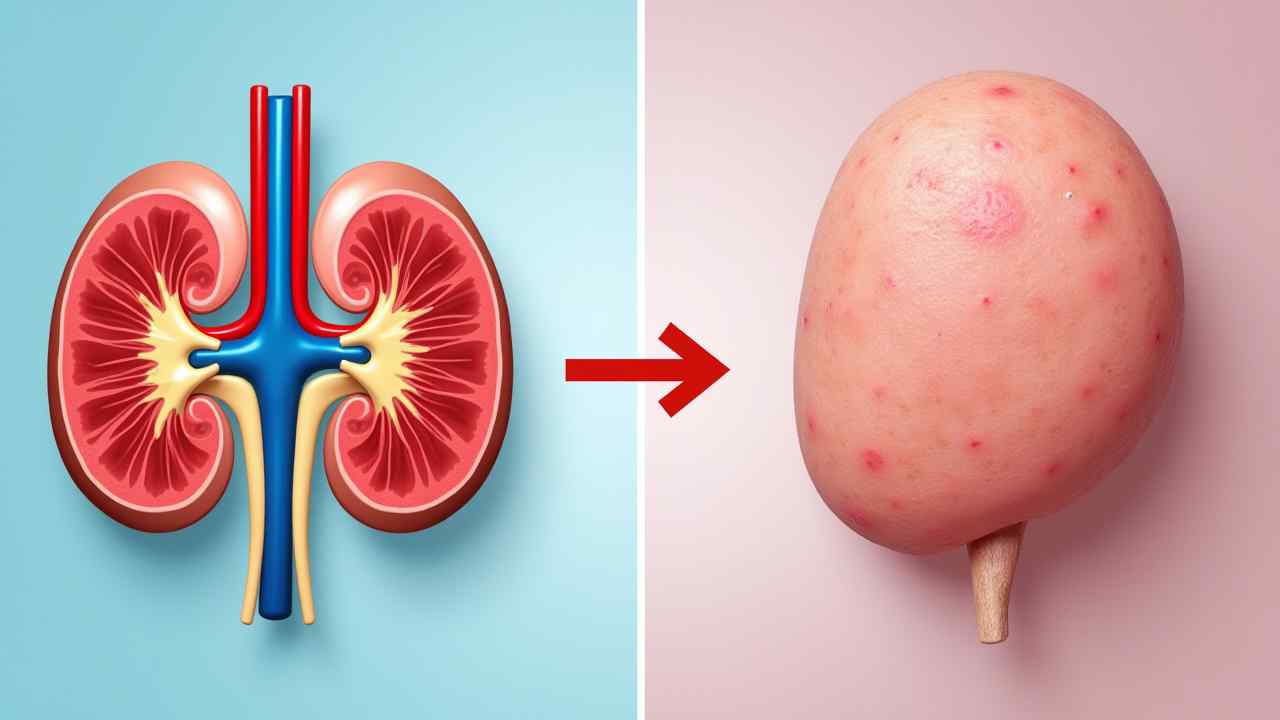
🩺 Skin Rashes and Kidney Disease: A Doctor's Guide to the Connection
🩺 A Doctor's Guide to Skin Rashes & Kidney Disease (When to Be Concerned) 🩺
❗ CRITICAL MEDICAL WARNING: A skin rash can have many causes, from simple allergies to serious internal diseases. If you have a persistent, widespread, or intensely itchy rash, you must be evaluated by a doctor for a proper diagnosis. This guide is for informational purposes only and is not a substitute for professional medical advice.
When you think about the symptoms of kidney disease, you might think of issues related to urination or swelling. However, your skin can often be one of the first places to show signs that your kidneys are not working properly. A specific type of skin rash with kidney disease is a common and distressing symptom.
This guide will explain the connection between your skin and your kidneys. We will cover the most common type of rash and the other skin changes to look for. Let's explore this important health topic. ✅
🤔 First, What is the Connection Between Your Skin and Your Kidneys?
Your kidneys are your body's master filtration system. Their main job is to remove waste products and excess fluid from your blood to produce urine. When your kidneys are damaged and can no longer do this job effectively, these waste products build up in your bloodstream. This condition is called uremia.
This high level of toxins in your blood can have a direct and significant impact on your skin. It can cause a range of problems, from severe itching to noticeable rashes and color changes. Skin problems are a very common complication of advanced chronic kidney disease (CKD).
- What is Uremic Pruritus (Kidney-Related Itching)?
This is the most common skin symptom of advanced kidney disease. "Pruritus" is the medical term for itching. Uremic pruritus is a persistent and often agonizing itching that is not caused by a primary skin problem, but by the kidney failure itself.
The itching can be widespread and is often worse at night. Constant scratching can then lead to a secondary skin rash from the kidney problem. This can look like:
- Dry, flaky, and cracked skin (xerosis)
- Excoriations (scratch marks)
- Thickened, leathery skin from chronic rubbing
- Bumpy, nodular rashes
- What Are Other Skin Signs of Kidney Disease?
Beyond the itching and secondary rashes, there are a few other skin changes that can be a sign of a serious kidney problem. These include:
- Uremic Frost: In cases of very severe, end-stage kidney failure, the high concentration of urea in sweat can crystallize on the skin's surface as it evaporates. This leaves a white, frosty coating.
- Color Changes: Chronic kidney disease can sometimes cause the skin to take on a sallow, yellowish, or grayish hue.
- Calciphylaxis: A rare but very serious condition where calcium deposits build up in the blood vessels of the skin, leading to extremely painful, non-healing ulcers.
- What is the Most Important Action to Take?
If you have a persistent, intensely itchy rash, especially if it is accompanied by other symptoms like fatigue, swelling in your legs, or changes in your urination, you must see a doctor. They can run simple blood and urine tests to check your kidney function.
The treatment for a skin rash from kidney disease is not a skin cream. The treatment is to manage the underlying kidney disease. Your doctor may also prescribe medications to help control the itching. The dry autumn air here in Bursa can make the dryness and itching of uremic pruritus feel even worse, so keeping the skin well-moisturized is an important supportive step. 🍂